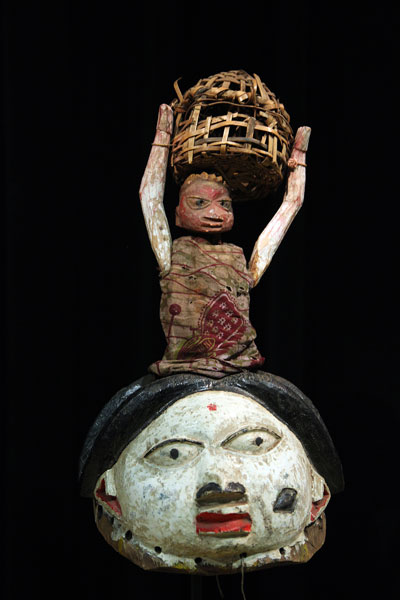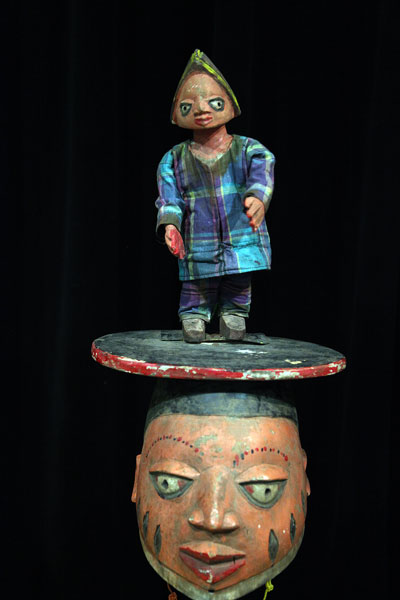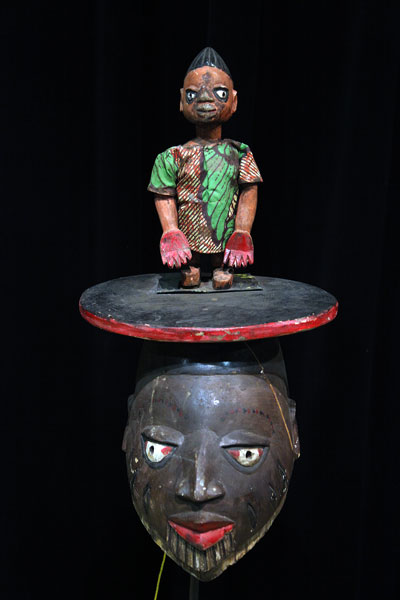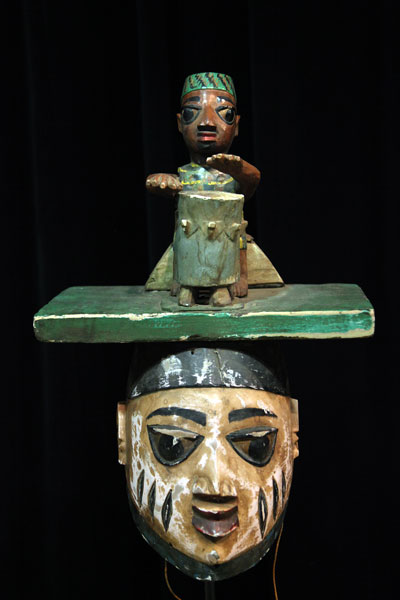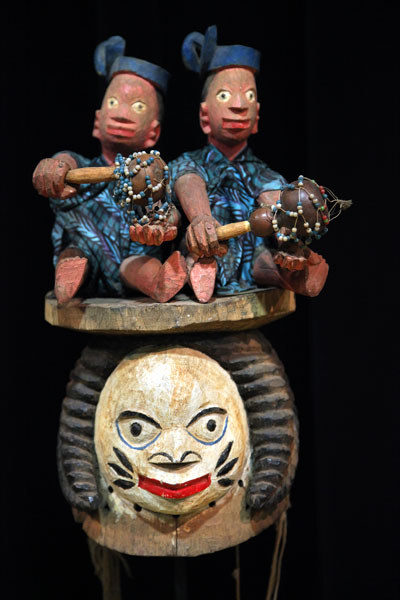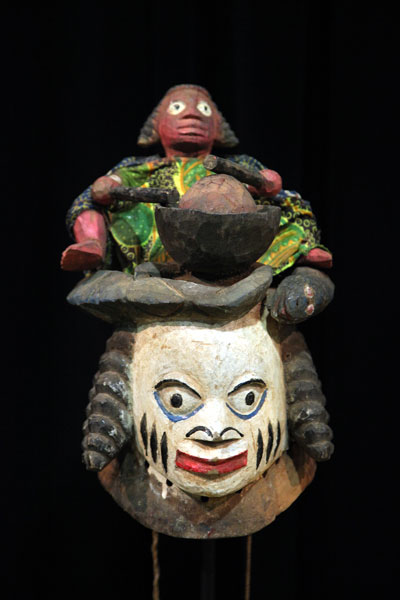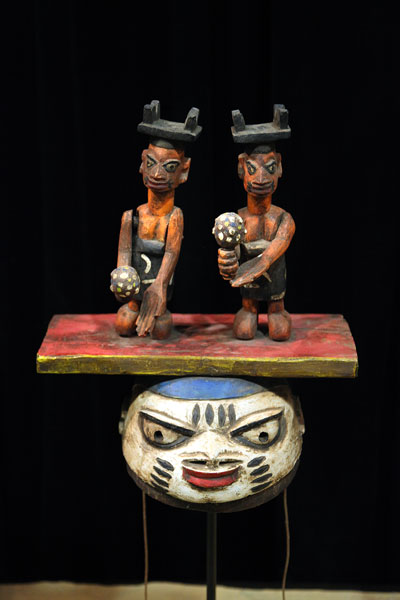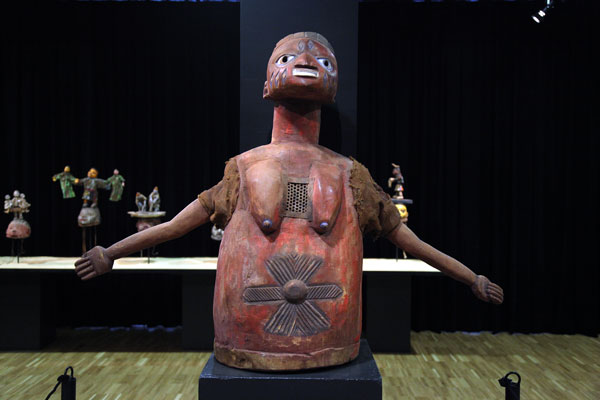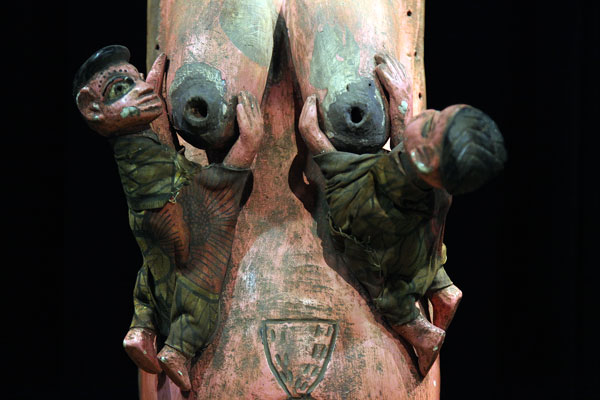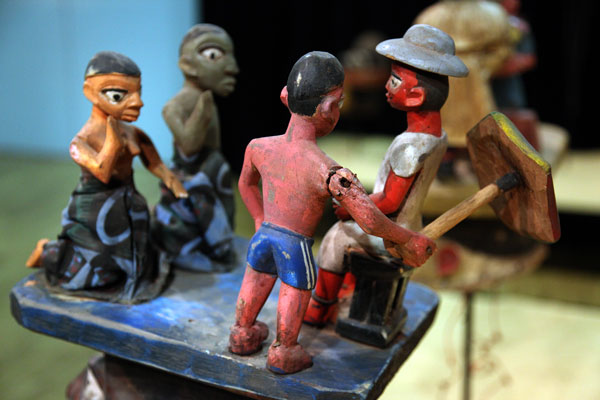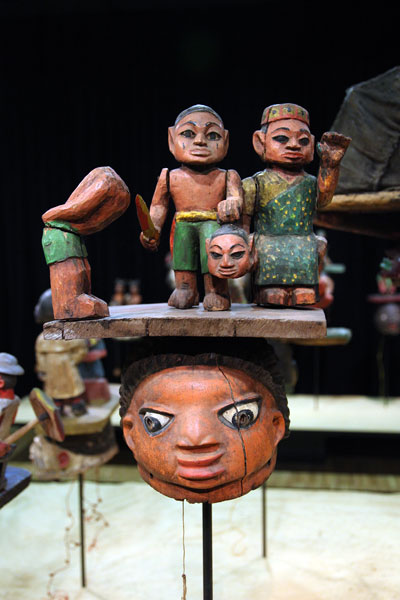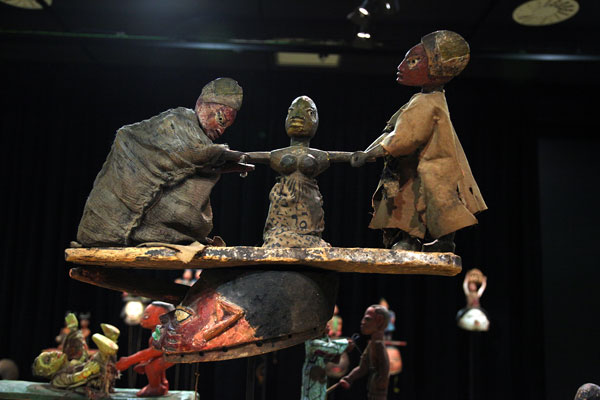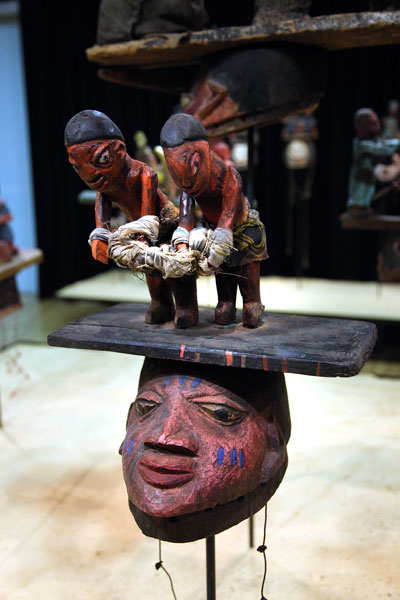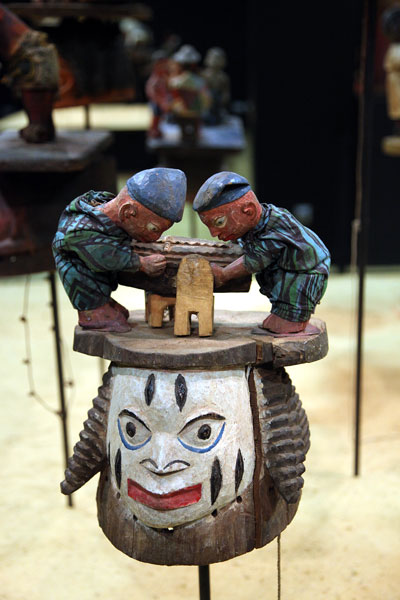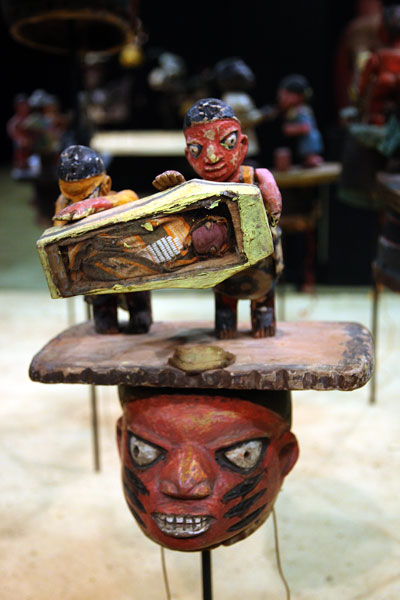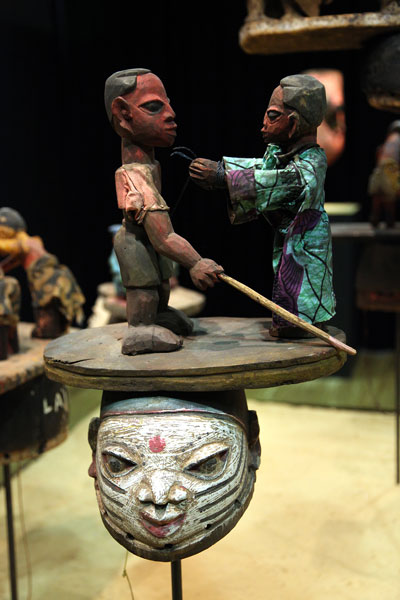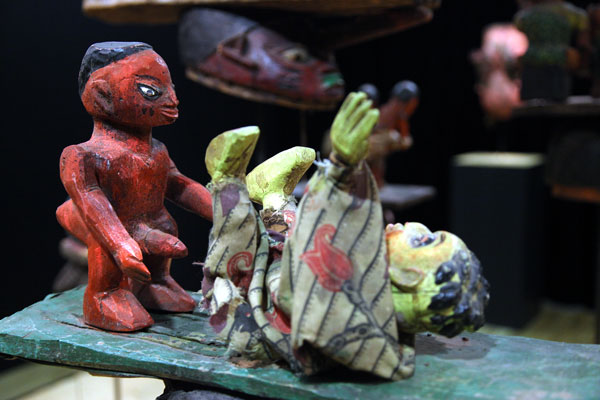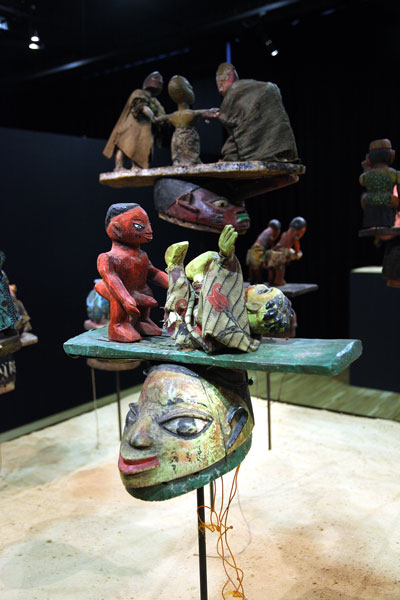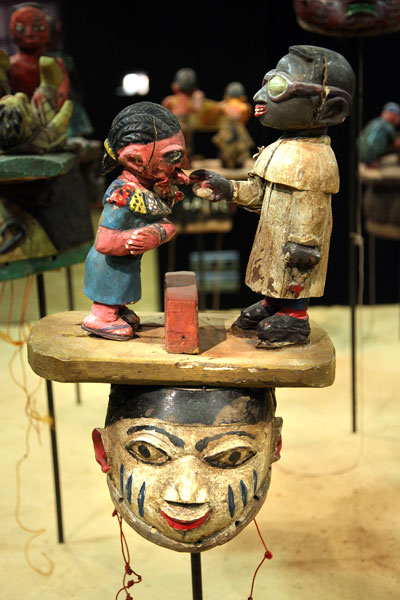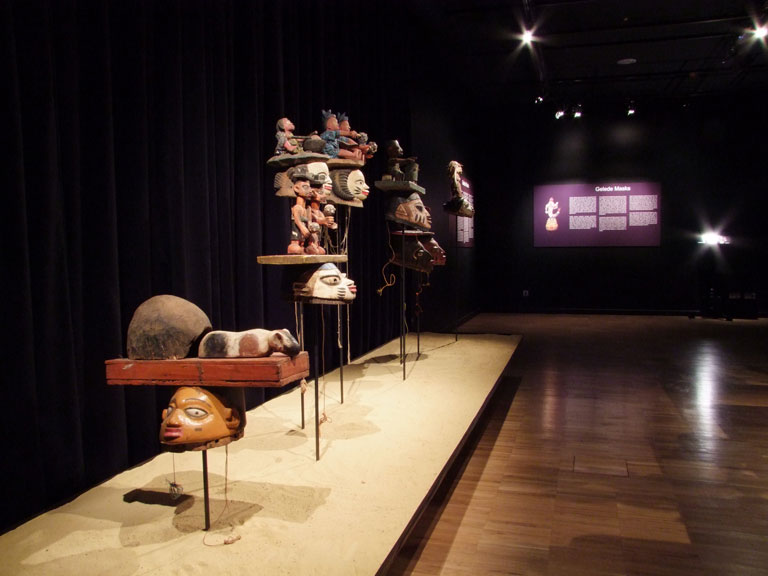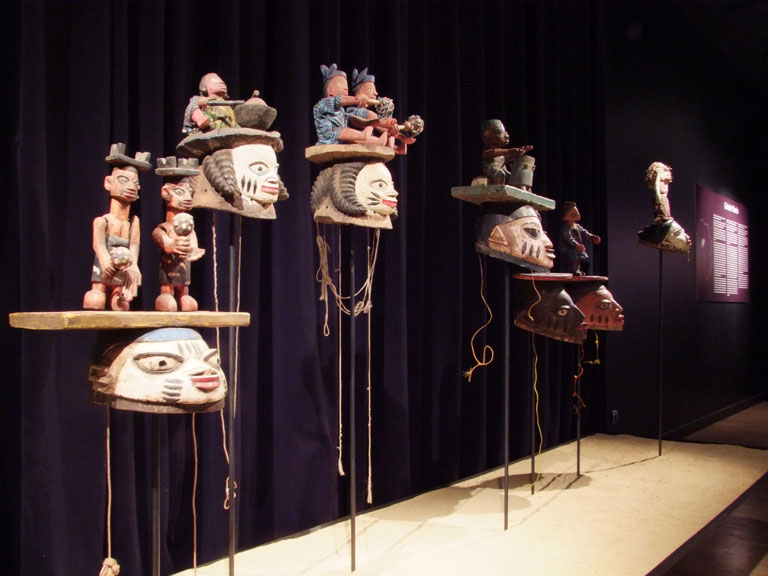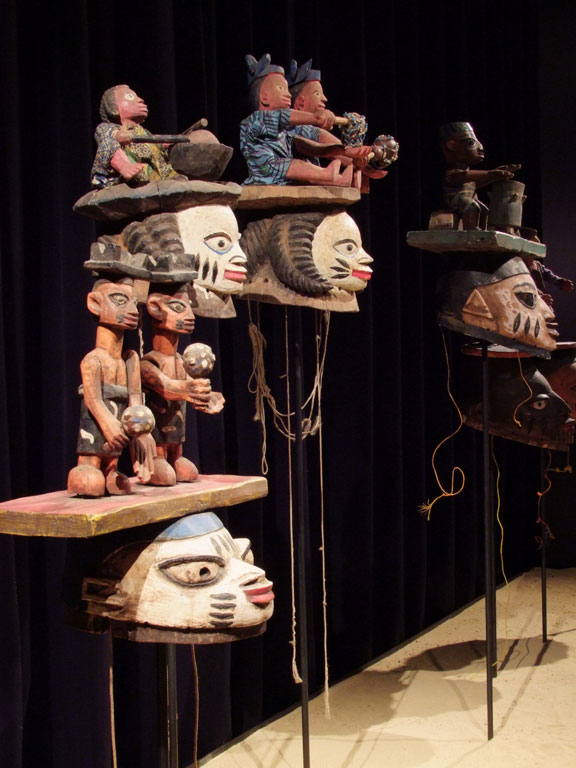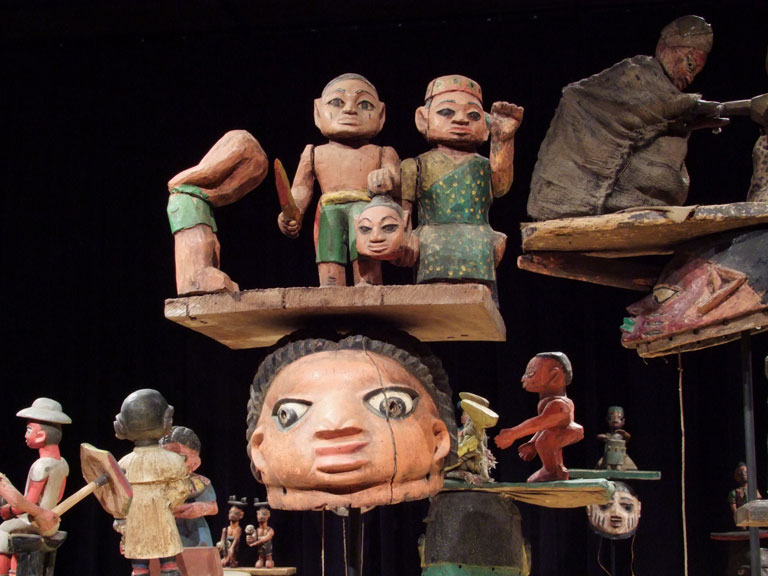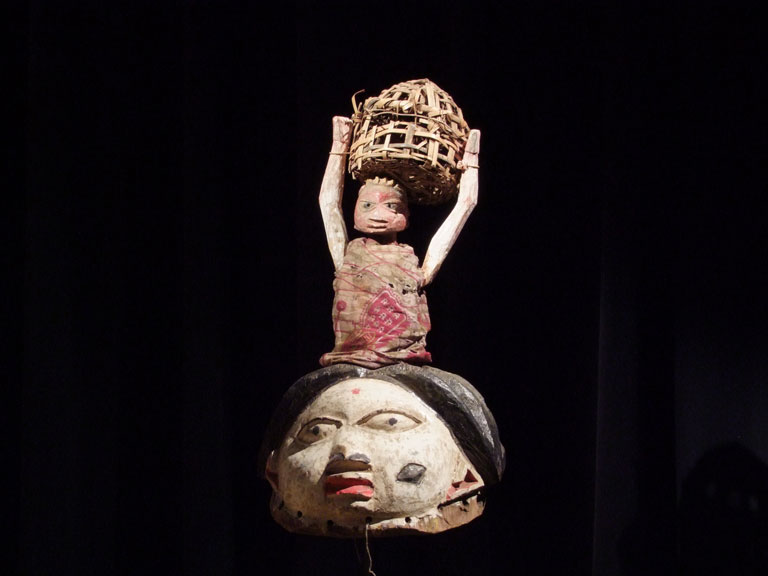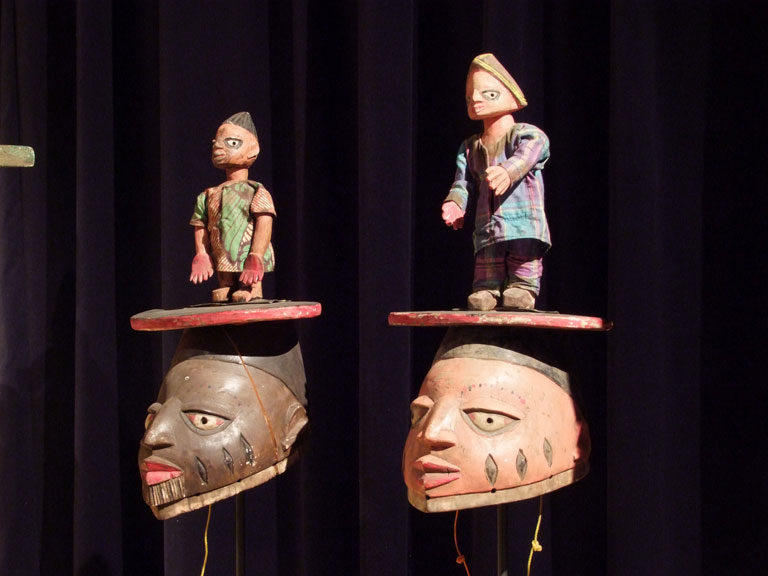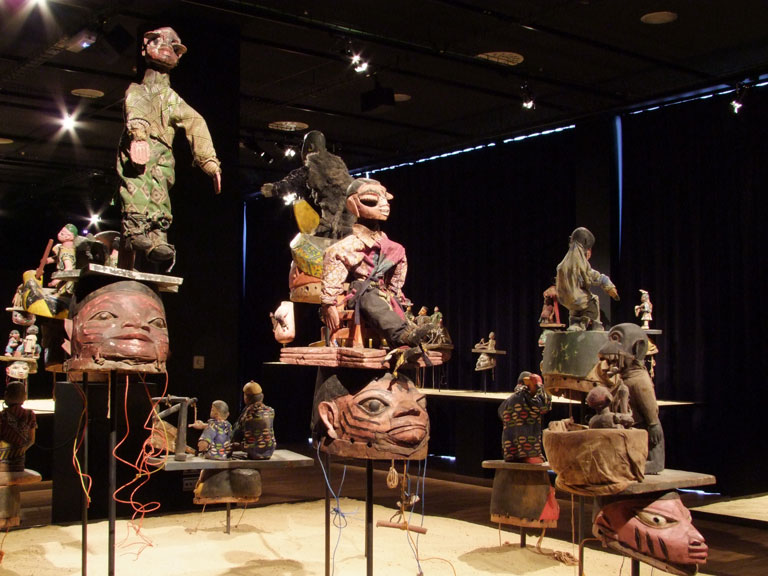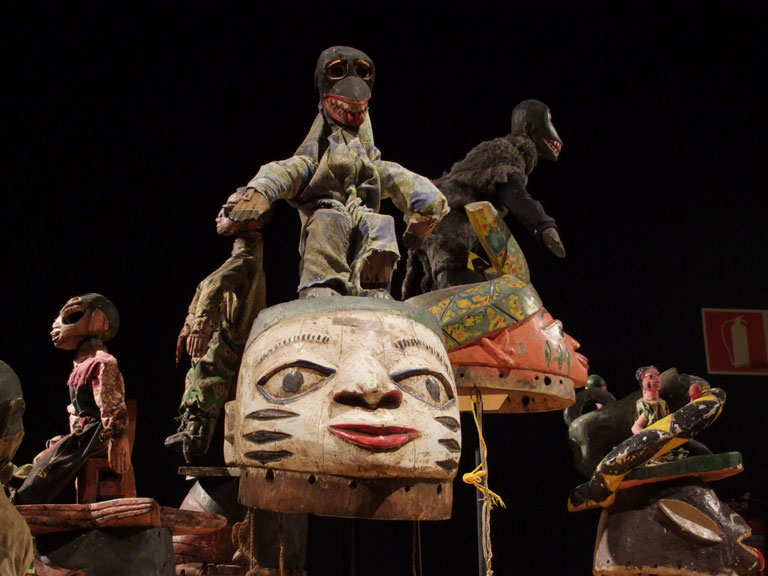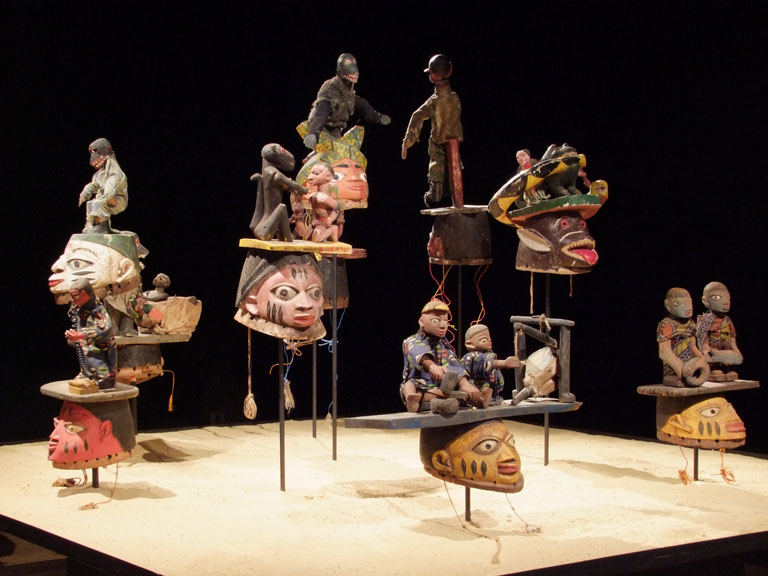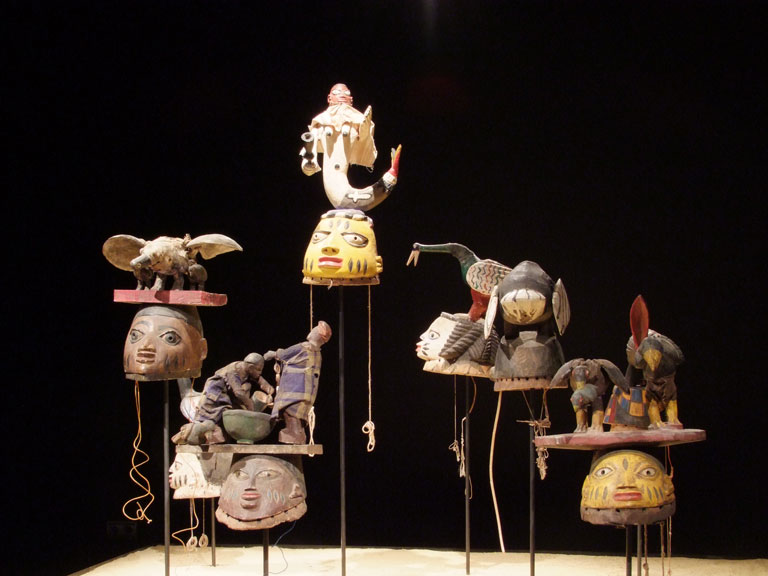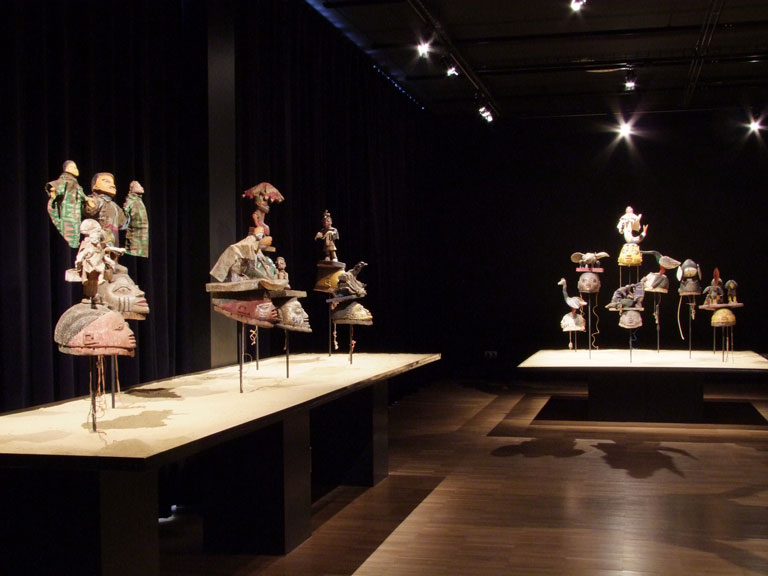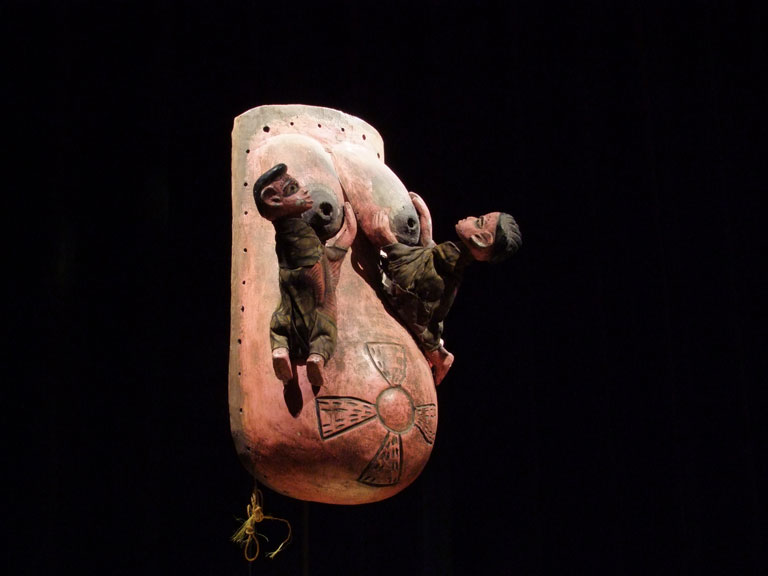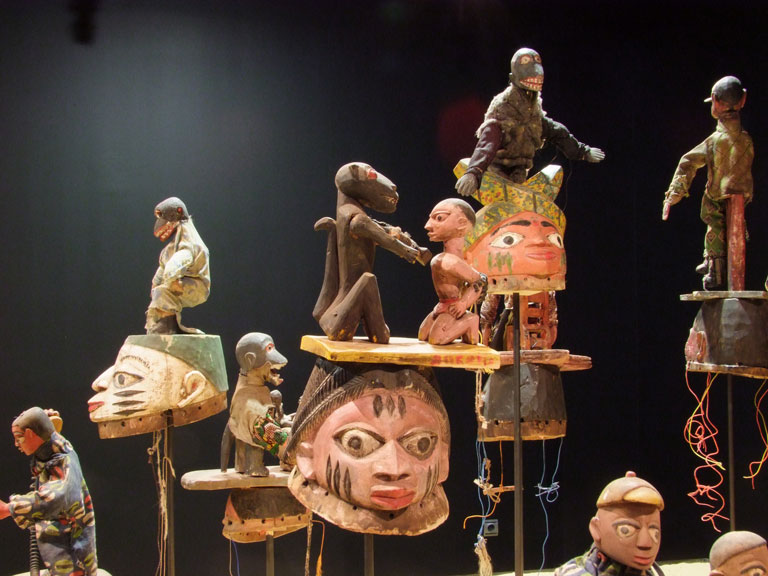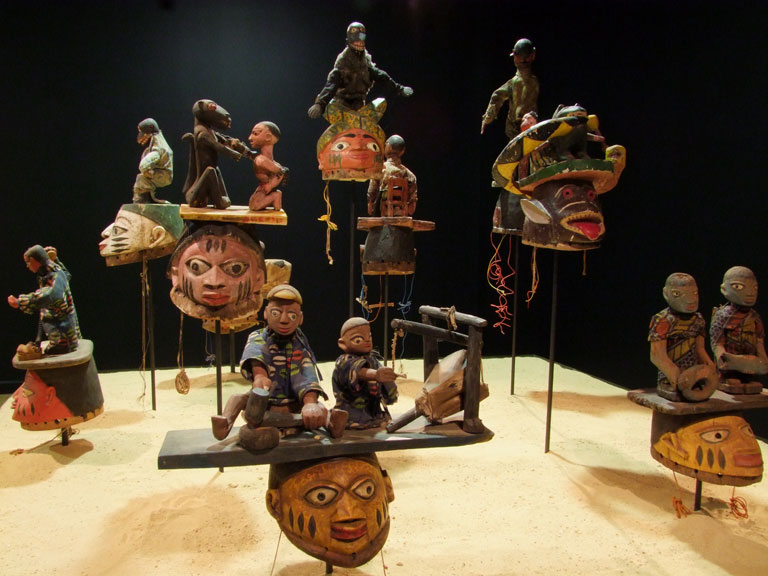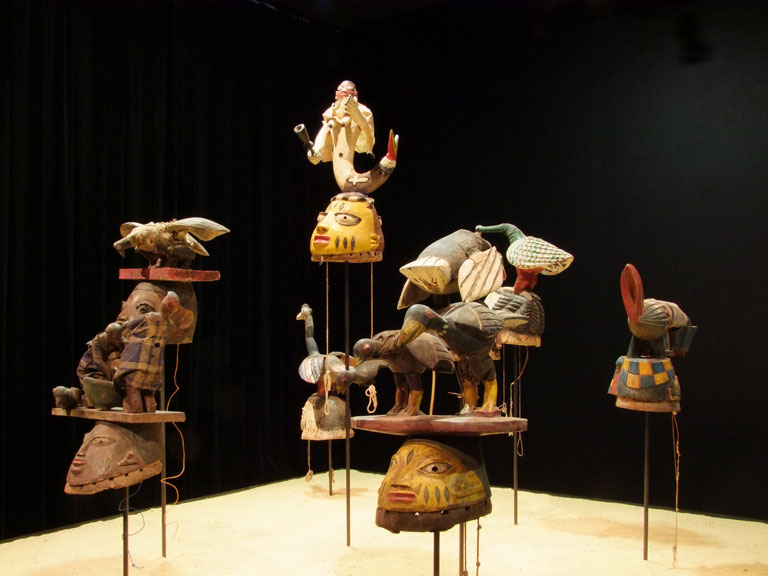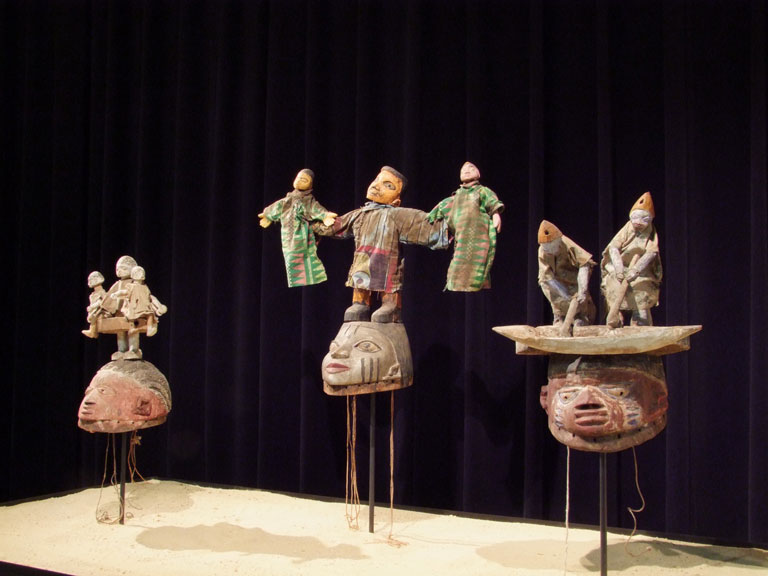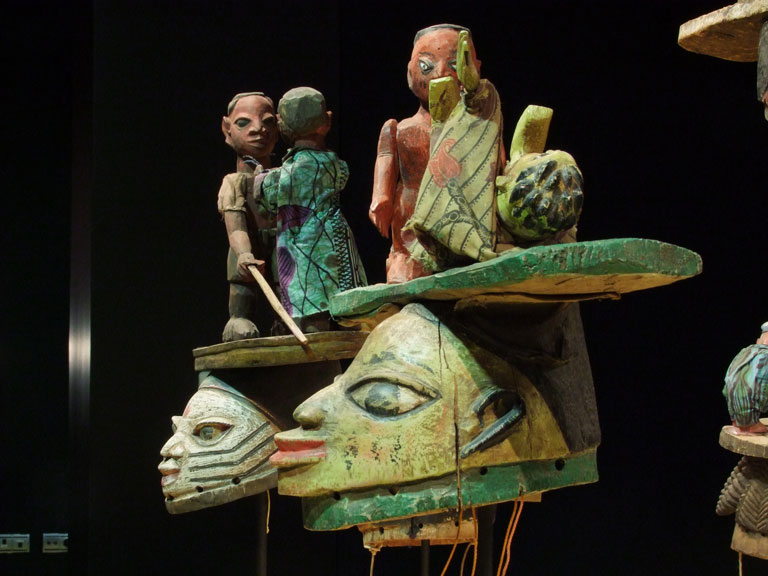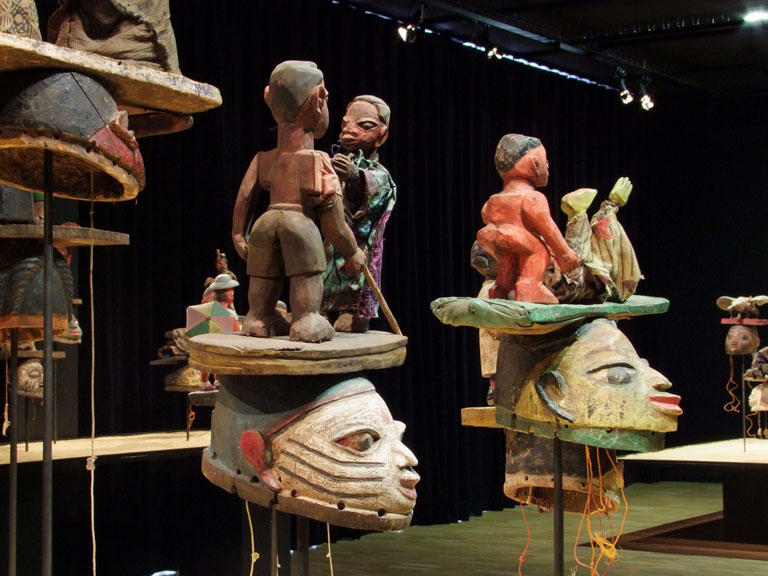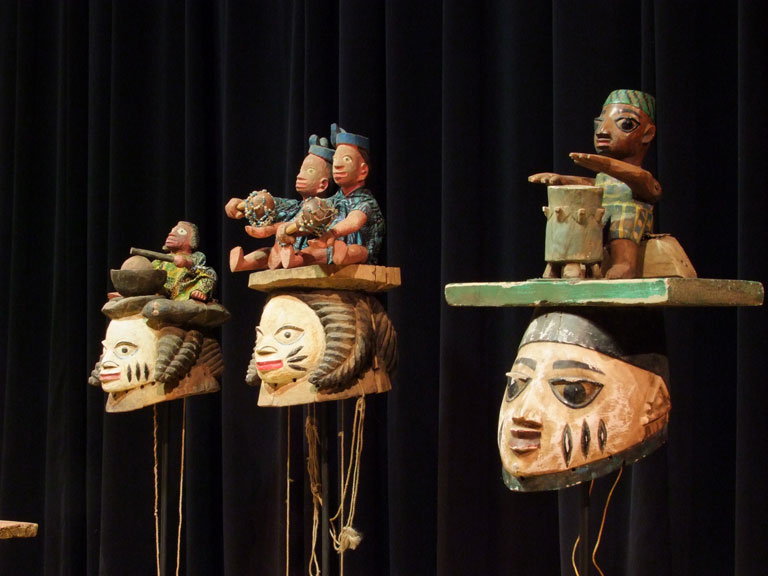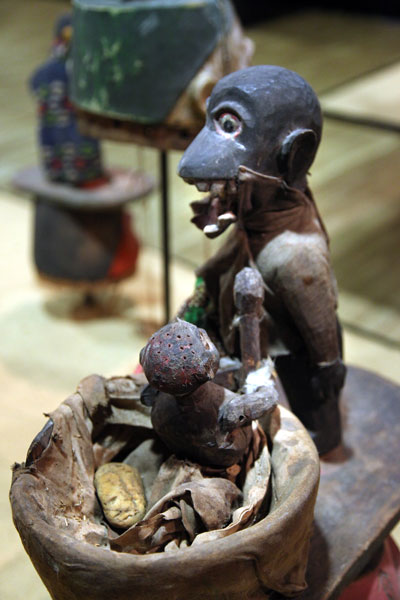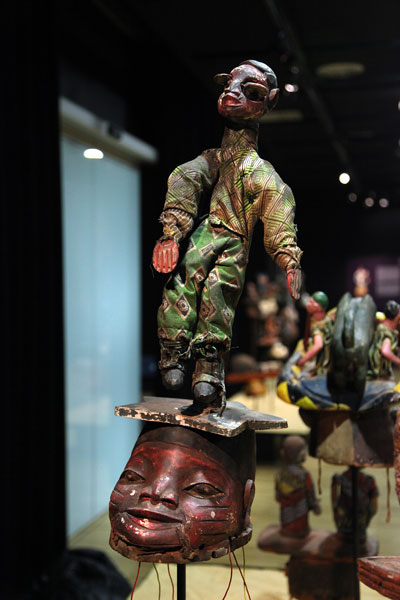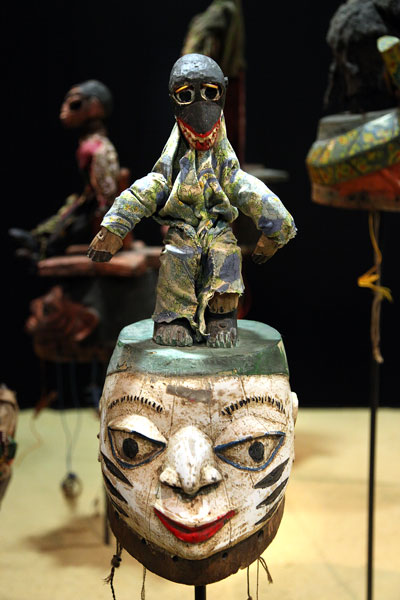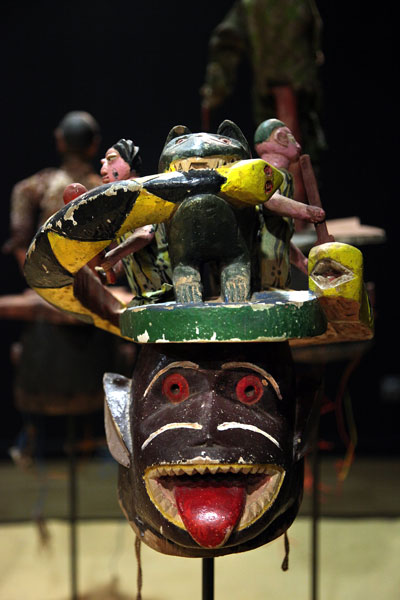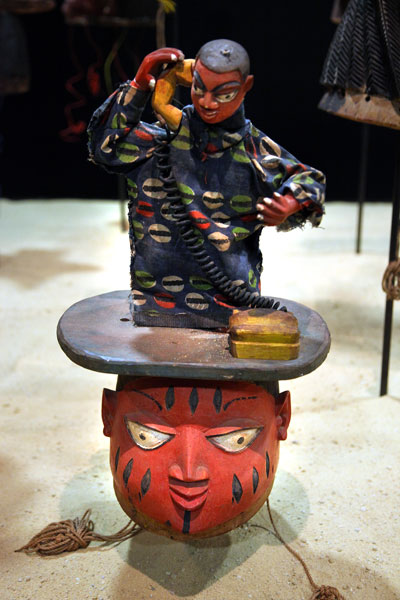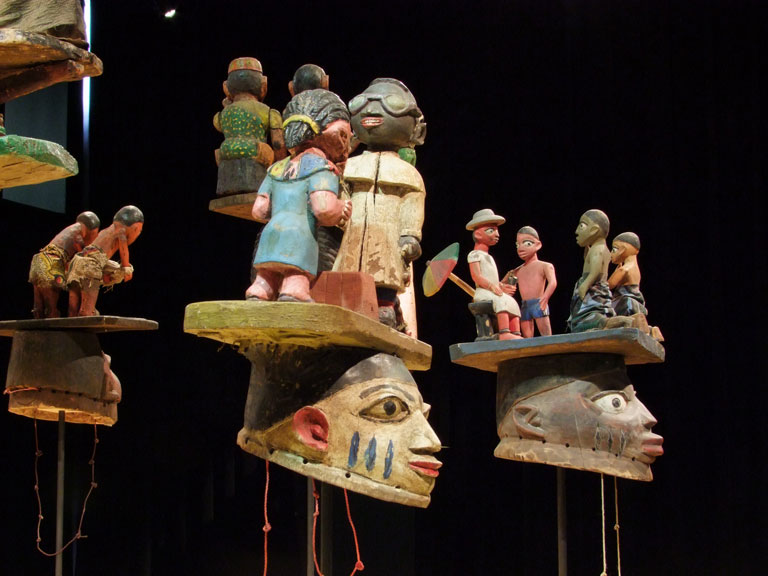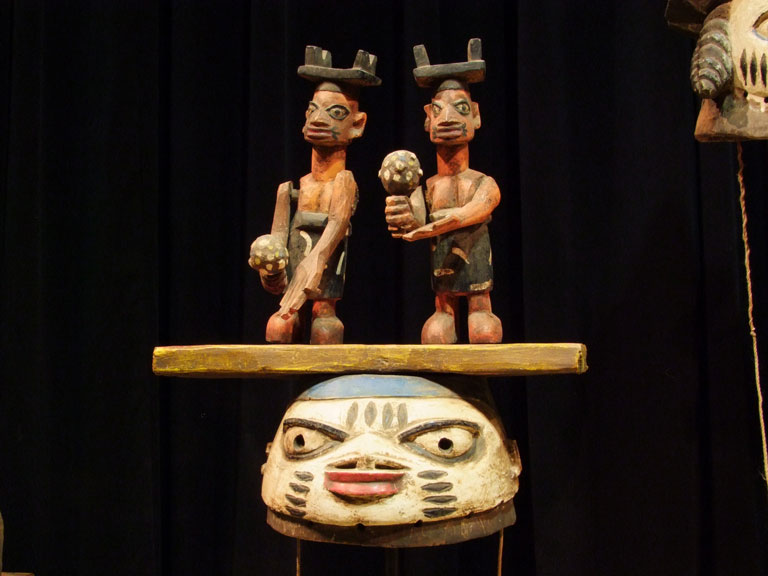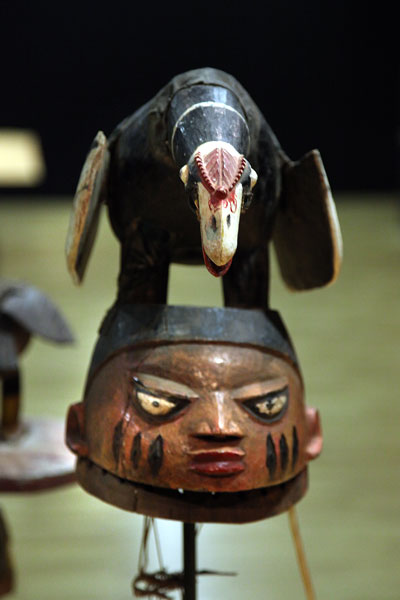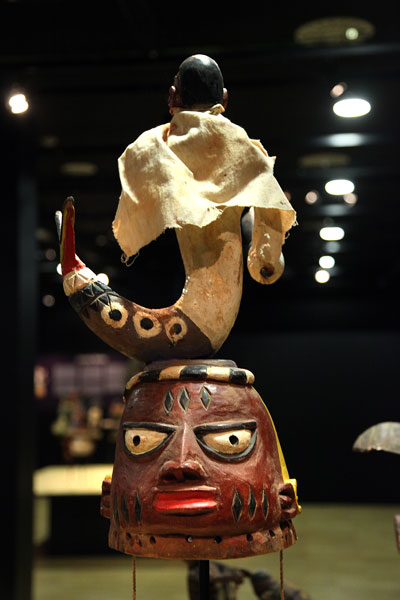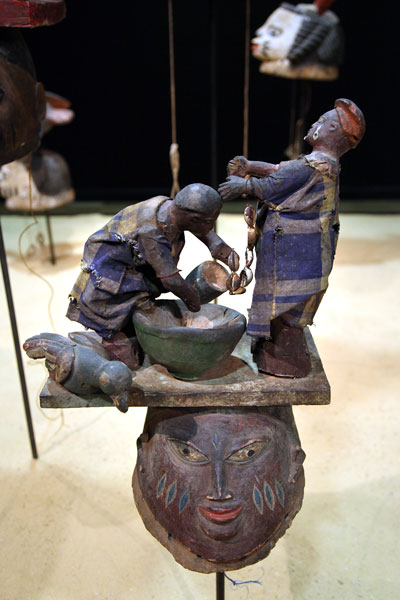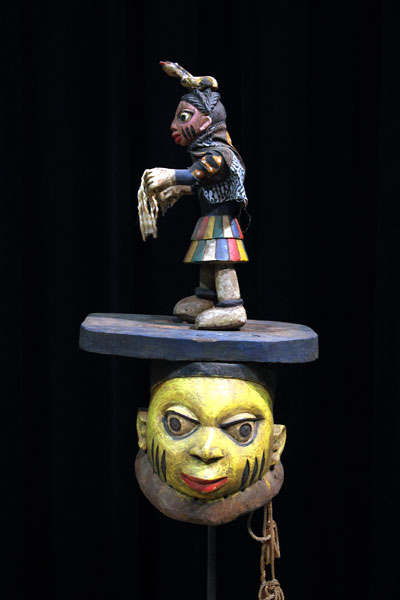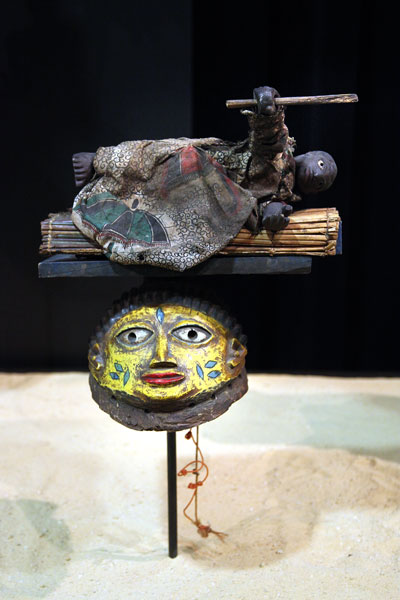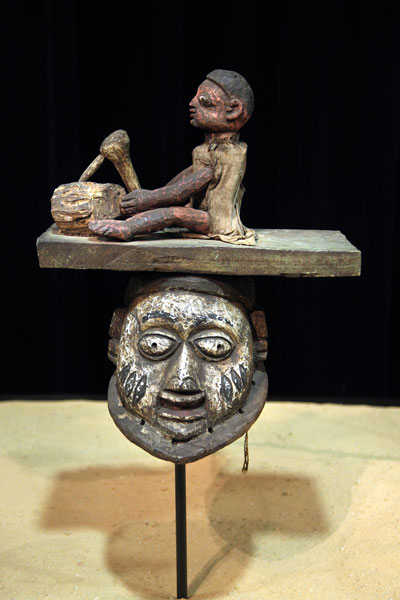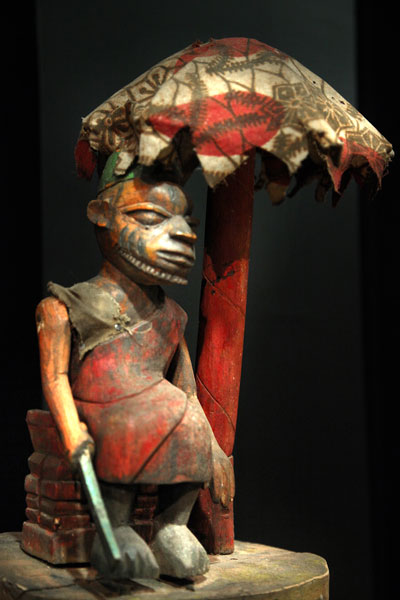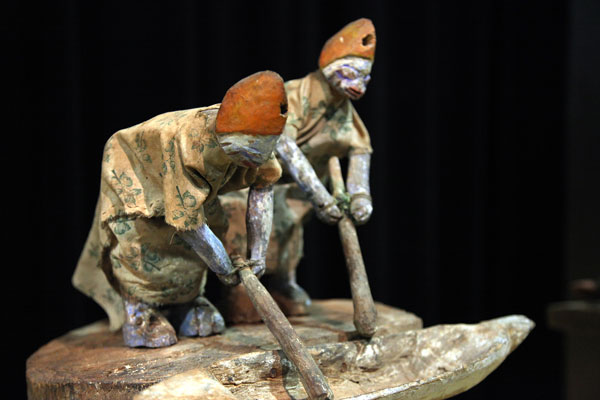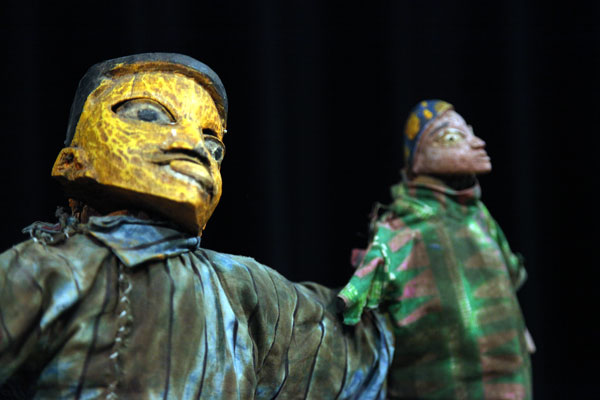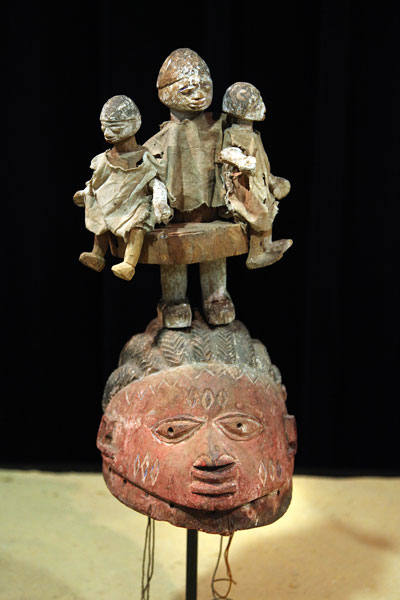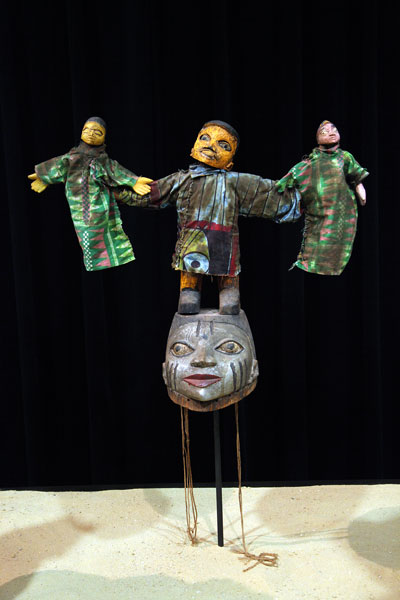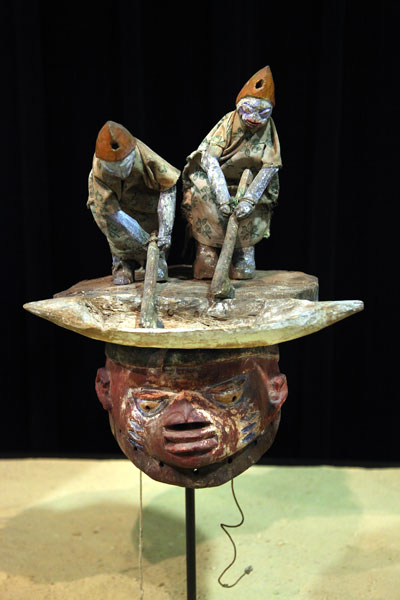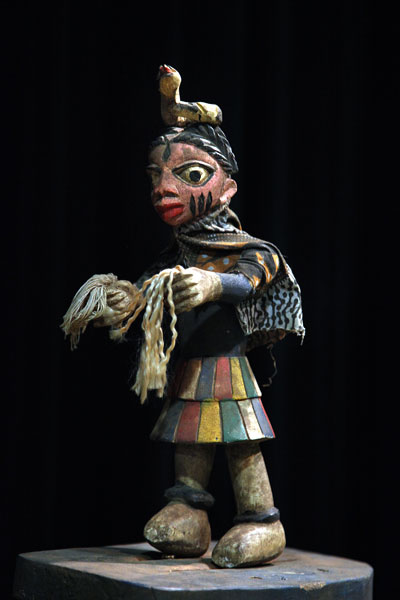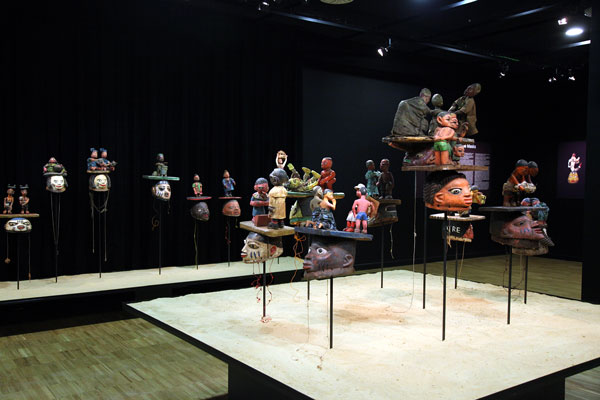
This exhibition was dedicated to the African Gelede and Efe masks, original to Benin and Nigeria, whose particularity is that they have puppets or articulated dolls on them.
The forty-three-piece collection belongs to the Dutch collector Ursula Voorhuis, and has only previously been shown in Dordrecht’s International Puppet Festival. Nonetheless, it was the first time, and in Tolosa, that the Gelede and Efe masks were shown together.
The exhibition, which run from March to June, aimed at showing to the public these rarely seen masks.
The forty-three-piece collection belongs to the Dutch collector Ursula Voorhuis, and has only previously been shown in Dordrecht’s International Puppet Festival. Nonetheless, it was the first time, and in Tolosa, that the Gelede and Efe masks were shown together.
The exhibition, which run from March to June, aimed at showing to the public these rarely seen masks.
The pieces are composed of a mask that is worn on the head as if it were a helmet and puppets or dolls that sit on them, which are used to represent satirical, religious, contemporary, westernised or daily scenes. Occasionally, the masks only represent a man or woman’s head, but, as a norm, they feature rather complex representations of human figures wearing headscarves or carrying animals and tools. The number of masks that take part in the dances is unfathomable and the variety of topics that they touch on practically limitless.
The collection also featured a number of puppetless masks used during the night festival (Efe). These have been included for a better understanding of the festival’s general nature, but also because of the peculiarity of some of them.
Regarding their style, the majority of masks originated among the Anago Yoruba people, who live along the coastline of south-eastern Benin and south-western Nigeria. The Gelede ceremony is performed by the Yoruba-nago community, which inhabit Benin, Nigeria and Togo. For over a century, its aim has been to pay homage to the primal mother Yyà Nlà and women’s role in the social organisation and development of the Yoruba society. It is celebrated after harvest-time, or due to important events, droughts and epidemics. The show, characterised by the use of carved masks, is sung in the Yoruba language and tells the story and myths of the Yoruba-nago people.
The collection also featured a number of puppetless masks used during the night festival (Efe). These have been included for a better understanding of the festival’s general nature, but also because of the peculiarity of some of them.
Regarding their style, the majority of masks originated among the Anago Yoruba people, who live along the coastline of south-eastern Benin and south-western Nigeria. The Gelede ceremony is performed by the Yoruba-nago community, which inhabit Benin, Nigeria and Togo. For over a century, its aim has been to pay homage to the primal mother Yyà Nlà and women’s role in the social organisation and development of the Yoruba society. It is celebrated after harvest-time, or due to important events, droughts and epidemics. The show, characterised by the use of carved masks, is sung in the Yoruba language and tells the story and myths of the Yoruba-nago people.
Museum’s opening hours
From Tuesday to Friday
From 10:00 to 13:00 // From 16:00 to 19:00
Weekends and holidays
From 10:30 to 14:00 // From 16:00 to 19:30
Mondays: Closed
The museum will be closed on January 1 and 6, on January 5 in the afternoon; in Carnival from the 27th to the 5th, on June 24 for the San Juan festivities and on December 25. On December 24 and 31 in the afternoon.
Access to the theater will be closed 15 minutes after the start of the performance.

Tolosa Puppet
International Center
Euskal Herria Plaza
20400 Tolosa
Gipuzkoa
